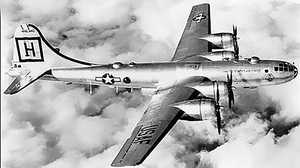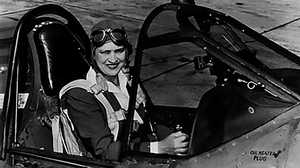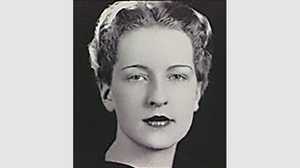Women Fly the B-29

In the summer of 1944, the 25-year-old U.S. Lieutenant Colonel Paul W. Tibbets had a problem. He was in charge of training pilots on the Army Air Forces' newest, biggest and most complicated bomber yet, and the task was turning out to be much more onerous than he'd anticipated. Tibbets' men were putting up unprecedented resistance. In point of fact, the pilots had every reason to be wary. The B-29 was not only much larger and heavier than any bomber the U.S. had flown before, it also hadn't gone through the years of operational testing to which Boeing had subjected its predecessor the B-17. Initially engine fires were one of the major problems. The planes' Wright engines were often called the Wrong engines. Part of the trouble could be traced to the engine cowlings that were too tight and often caused fires even before the planes had taken off. Although engine improvements were made over time, fires remained a problem throughout World War II.

Tibbets decided that the way to convince the men to fly the plane was to show that women could do it. The young Colonel recruited Dora Dougherty and Dorothea Moorman to be his demo pilots. Dougherty remembers that at that point, she had never even been in a four-engine plane before. Tibbets did not warn his new recruits of the engine fire problem. Instead he trained them to take off without the standard power checks. After three days, the colonel decided his women pilots were ready for their demonstration. For several days, Dougherty and Johnson ferried pilots, crew chiefs and navigators from the very-heavy-bomber base at Alamogordo, New Mexico across the state. Tibbets' plan was a terrific success: After watching the women fly the four-engine bomber, the men stopped complaining about the plane. Air Staff Major General Barney Giles brought the demonstrations to an abrupt halt after just a few days, telling Tibbets that the women were "putting the big football players to shame." Giles was also worried that an accident would unleash tremendous adverse publicity. The two women were sent back to Eglin Field, Florida, and never flew a B-29 again. But the plane they'd demonstrated went on to play a decisive role in the Allied victory in World War II.
Dora Dougherty's certificate of competence in the B-29
ARMY AIR FORCES PROVING GROUND COMMAND
Office of the Operations Officer
Eglin Field, Florida
24 June 1944
1. I certify that I have read and understand all available pertinent Technical Orders, instructions and literature pertaining to the airplanes and that I thoroughly understand the fuel and ignition systems, brake, flap and wheel controls, all other controls and auxiliary and special equipment necessary to the operation of the airplane under all conditions and that I am to instruct others on these installations.
Signed: Dora Dougherty, Pilot
2. I certify that Dora J. Dougherty, WASP has pursued a course of instruction in the B-29 airplane in accordance with the provisions of AAF Regulation 50-16, dated 26 October 1942, and other pertinent to fly this type airplane on all types of missions subject to the following limitations:
-none-
Signed: Paul W. Tibbetts, Jr., Lt. Col., A.C.
3. The above officer is qualified to pilot the above aircraft subject to limitations listed in Par. 2.
Operations Officer
Jerald E. Pixley, Maj., Air Corps
Date: 24 June 1944
Excerpt below from Maintenance Bulletin No. 19
Folks, those WASPS' that you see 'round about greased the "LADYBIRD" on No. 21 the other evening at 1730 -- and what a find job -- mastering the mighty B-29 in just 8 hours transition with no previous time on four-engine aircraft. Is that good? -- or are we a little backward?
The two luscious femmes go by the names of Dora Dougherty and Dorothea Moorman from the Proving Grounds at good old Sand Strip Eglin. Stop them and ask a few questions on how to handle the equipment. You will be surprised how much knowledge is stored behind all that beauty.
They are carrying some tests on engine heat, and what have you. Quite a big job for two delicate dishes of femininity. Perhaps they should take some of our supermen for a ride and show them how to get off the ground with speed dispatch at a low head temperature.
HARRY SHILLING
Major, Air Corps
Director of Maintenance
Letter from Harry McKeown to Dora Dougherty Strother
August 2, 1995
Dear Dr. Strother:
Before you throw this letter into the trash-basket, let me introduce myself. In 1944 I met you with Col. Tibbets and Didi Morman when you brought a B-29 to Clovis AFB, Clovis, N.M. I was the Director of Maintenance & Supply and Base Test Pilot at the time. You came to show us that the B-29 plane was not one to be feared. You were the pilot that day and demonstrated your excellent flying skills and convinced us the B-29 was the plane that any pilot could be proud to fly. From that day on we never had a pilot who didn't want to fly the B-29.
It has been many years but I have never forgotten that day at Clovis and never will. I recently read about you in the Confederate Air Force "Dispatch" dated July/Aug. 1985, that a friend of mine had given me. I have asked the CAF to send this letter on to you and hope that you will receive it. I realize that it was a long time ago, but I still want to thank you for your helping me that day at Clovis. I will admit that I was scared, even though I had just returned from flying B-24s in North Africa. You made the difference in my flying from then on. I wasn't the only pilot that felt this way, and I am sure that they would thank you too if they knew where you were.
The article didn't mention Didi Morman so I assume that she has passed on. She was the Co-pilot that day.
Thank you again and with kindest regards, I remain,
Harry McKeown
Lt. Col. USAF (Ret)
506 Phelps Street
Sumter, S.C. 29150







